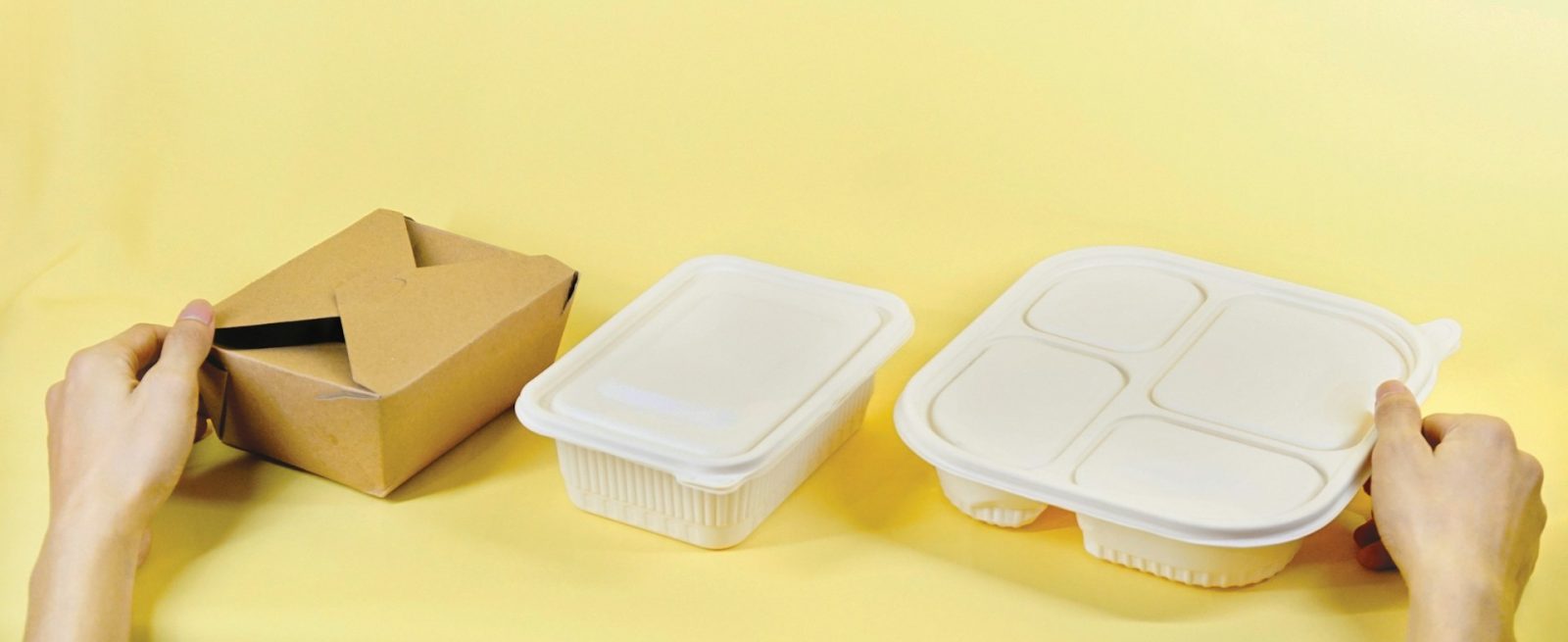Hungry for Change: Understanding Consumer Perception and Demand for Sustainable Packaging
4 Min Read By Felicity Kelly
The restaurant industry has recognized the need for innovative packaging solutions to meet growing consumer demand and contribute towards sustainability targets.
Traditional restaurant packaging has a significant negative impact on the environment as common materials used, such as Styrofoam and single-use plastics, are not compostable. The high reliance on plastics for food packaging has led to a buildup of landfill waste and ocean pollution. This unsustainable packaging harms the environment and has cost implications for the future as the production and disposal of these materials are becoming prohibitively expensive. Restaurants that opt for more sustainable packaging materials can save money and significantly reduce waste and environmental impact.
A range of innovative packaging types including materials, such as compostable paper products and plant-based plastics, are now available to restaurants to reduce environmental impact. Consumer demand for sustainable packaging is increasing as consumers are increasingly aware of environmental footprints, so they perceive restaurant products with sustainable packaging in a much more positive way. This can lead to increased turnover for those more socially responsible restaurants. So, if restaurants want to thrive, it's time to make the change and embrace sustainable packaging.
Unpacking Packaging's Impact on Restaurants: The Environmental Impact
Packaging waste is a significant problem for the environment and the restaurant industry is a major contributor. Millions of tons of packaging waste are generated by the restaurant industry every year so it's crucial to address this issue by finding alternative sustainable packaging solutions. Sustainable packaging practices can also help by encouraging the use of reusable containers and greatly reducing the need for single-use plastic packaging.
Restaurants produce over 22 million pounds of food waste each year and much of this is due to the excessive use of single-use packaging. Plastic pollution is a major environmental problem and single-use plastic containers and utensils end up in landfills and polluting the oceans. However, the adoption of recycling initiatives and reusable alternatives is helping to mitigate the negative environmental impact. The restaurant industry must continue to prioritize sustainable packaging and embrace renewable and recyclable innovations to minimize this environmental impact. Taking steps towards food packaging sustainability will benefit both the environment and restaurant owners in the long run.
Sustainable Packaging Options for Restaurants
Plastic containers and Styrofoam boxes used to be standard in the restaurant industry. But now you are more likely to find compostable or recyclable packaging options. This packaging quickly breaks down into organic matter when disposed of so transforms into nutrient-rich compost. The best sustainable packaging materials for very hot or greasy foods are plant-based materials such as sugarcane bagasse. These plant-based materials are heat-resistant so can effectively contain hot food including liquids and oils. Cold foods can be stored in compostable paper or cardboard boxes which can also be easily recycled.
Recyclable packaging is easily processed and reused so will help to minimize landfill waste. Choosing packaging made from paper, cardboard, glass, and plant-based plastics wherever possible as these can be recycled into new products. Reusable packaging for containers and bags can significantly decrease the amount of landfill waste and offer economic advantages by reducing the amount of new packaging materials required. So, there are various sustainable packaging materials for restaurants that can contribute to a more sustainable future. Customers and the environment will thank you for choosing these innovative solutions.
Navigating the Sustainability Challenge: Implementation
Implementing sustainable packaging does pose some challenges, it's not all good news. These issues can include poor availability of sustainable materials, initial upfront costs required, possible lack of consumer awareness and demand (though this is rapidly changing), and issues with regulatory compliance. However, it's crucial for companies to invest in research and development to explore new materials and sustainable technologies.
Educating consumers is key as although the demand for recyclable products is increasing, many consumers may still not be aware of the negative impact of conventional food packaging. While implementing sustainable packaging may present some initial challenges, there are great opportunities for the businesses that overcome them. Restaurants can help to create a greener packaging industry that will benefit the environment and position their restaurants as leaders in sustainability.
Understanding Consumer Demand
Everywhere you look products can be found with labels boasting the use of recyclable materials and sustainable production. But what do consumers really think about this shift towards sustainable packaging? Consumers are increasingly demanding options that are more sustainable and this demand has incentivized the industry towards adopting more recyclable alternatives.
With growing concerns about the environment, consumers are now actively seeking options that minimize environmental harm. The packaging industry has begun to incorporate various sustainable practices along with the development of alternatives to traditional packaging materials such as plastics. Companies have also begun implementing standardized recycling symbols and labels so consumers can easily identify and compare packaging. Consumers are becoming increasingly concerned about the environmental impact of the products they buy and the packaging used. The perceived environmental impact of traditional food packaging already influences consumer purchasing decisions, therefore sustainable packaging increases brand trust and with effective marketing can capture new customers. Businesses should prioritize sustainable packaging to meet the demands of environmentally-conscious consumers, to help create a greener and more profitable future.
Benefits of Sustainable Packaging
Profitability and customer convenience can often clash with environmental responsibility, but restaurants embracing sustainable alternatives can reap numerous benefits and reduce their carbon footprint. Benefits include:
- Environmental Impact – Reduction in the emission of greenhouse gases, waste reduction, and less pollution.
- Customer Satisfaction – using sustainable packaging can demonstrate commitment to sustainability and attract new environmentally-friendly customers.
- Cost Savings – Implementing sustainable packaging can produce significant cost savings in the long run.
- Regulatory Compliance – Following regulations set forth by local, state, and federal authorities.
Incorporating sustainable packaging materials and practices in the restaurant industry offers numerous benefits and very little in the way of downsides, especially over the longer term. So, switching to sustainable packaging is a win-win-win situation for the environment, the customers, and the restaurants.


